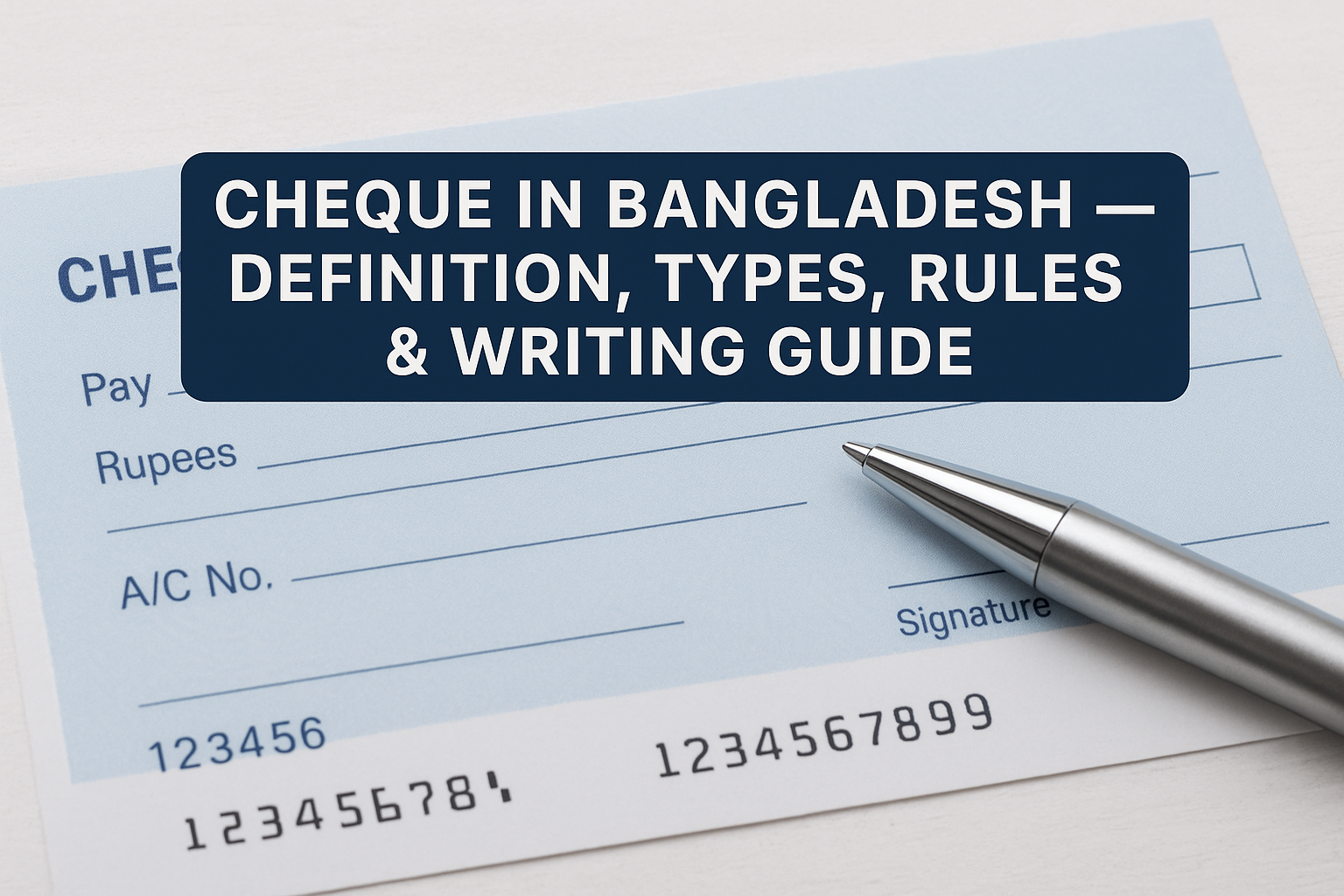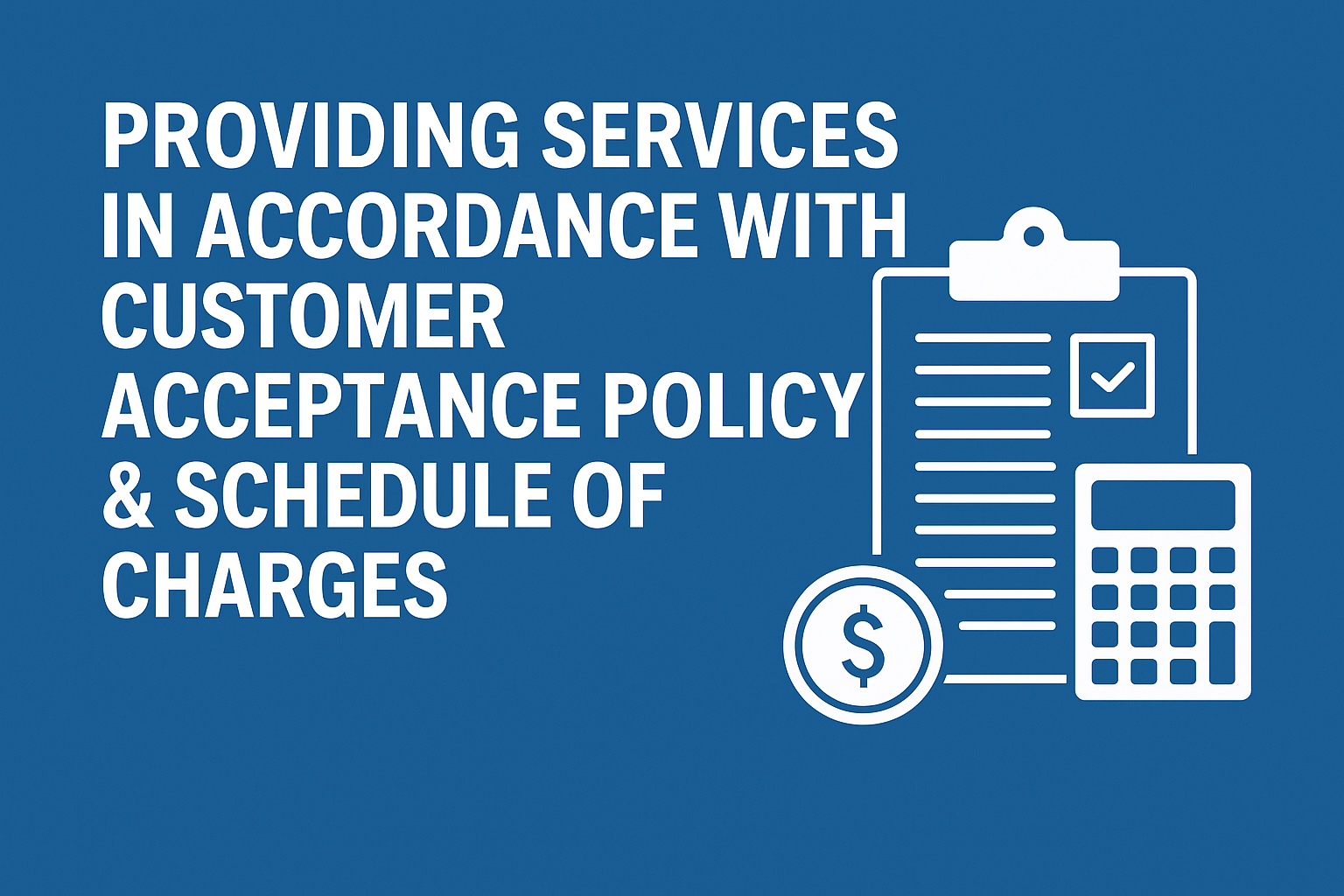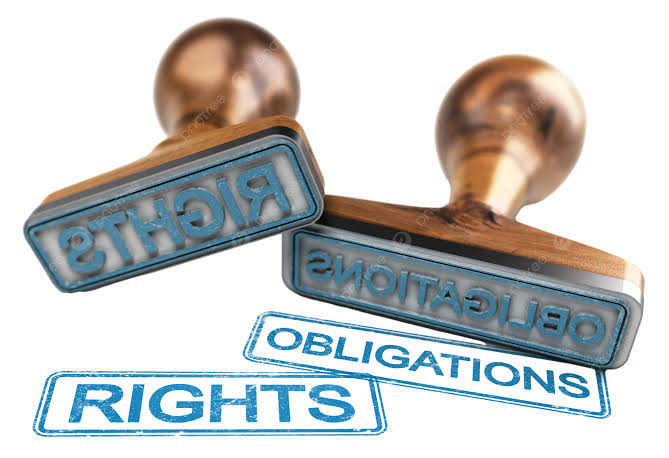Cheque in Bangladesh — Definition, Types, Rules & Writing Guide
Key Parts of a Cheque
- Payee: The individual or organization receiving the funds.
- Date: The issue date of the cheque.
- Amount: Clearly written in both words and numbers.
- Signature: The account holder’s official signature.
- Bank Details: Branch name, cheque number, and other identifiers.
Types of Cheques in Bangladesh
- Bearer Cheque: Payable to whoever presents it at the bank; least secure.
- Order Cheque: Payable only to the person named; endorsement may be required.
- Crossed Cheque: Cannot be encashed directly; must be deposited into a bank account.
Bangladesh Bank Rules for Cheques
- Cheques must be presented within 6 months from the date of issue.
- Alterations must be signed by the drawer; excessive changes may void the cheque.
- Post-dated cheques are valid only after the mentioned date.
- Cheques should not be issued without sufficient balance to avoid dishonour.
How to Write a Cheque Correctly
- Use a blue or black permanent ink pen.
- Ensure amounts in words and figures match exactly.
- Fill all fields and avoid leaving blank spaces.
- Write the payee’s name accurately.
- For added safety, cross the cheque to make it “account payee only.”
Cheque Bounce Procedure in Bangladesh
If a cheque is dishonoured, the payee can demand payment within 30 days of receiving the bank’s dishonour notice. If unpaid, legal action under Section 138 of the Negotiable Instruments Act can be initiated within the allowed time frame.
Precautions and Tips
- Always keep a photocopy or photo of issued/received cheques.
- Be cautious with cheques given to unknown individuals.
- Follow Bangladesh Bank regulations strictly to avoid penalties.
FAQ
Q: What are the types of cheques in Bangladesh?
A: Bearer, Order, and Crossed Cheques.
Q: What to do if a cheque bounces?
A: Contact the drawer, and if unresolved, seek legal remedy under the NI Act.




